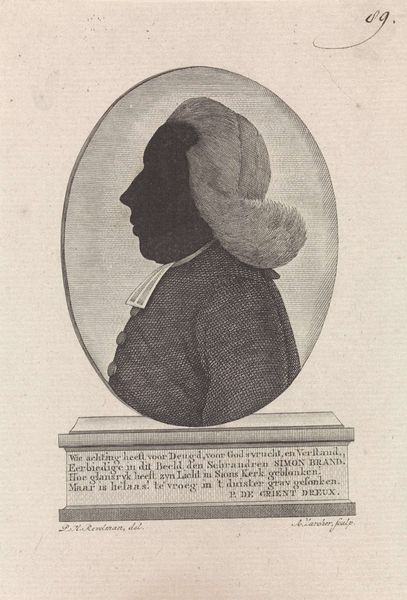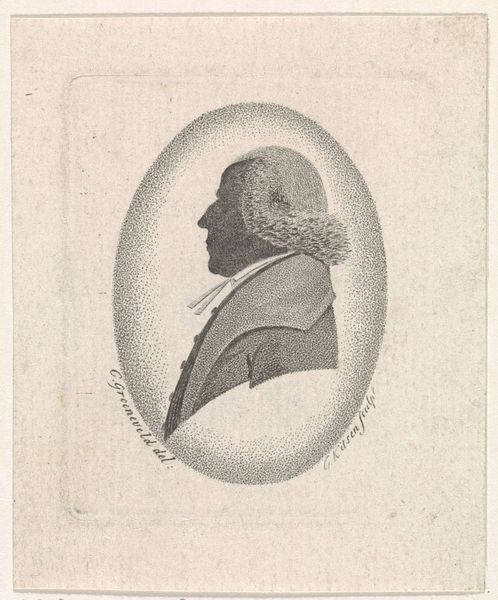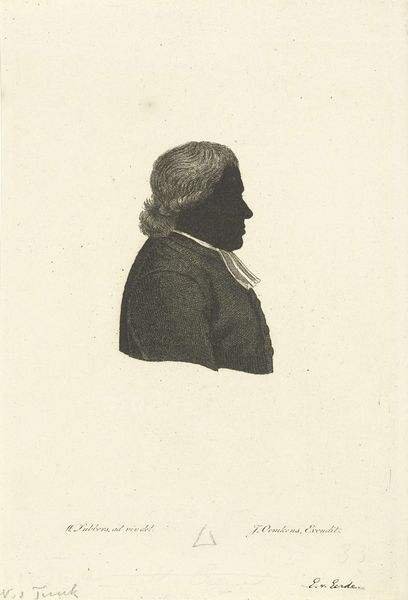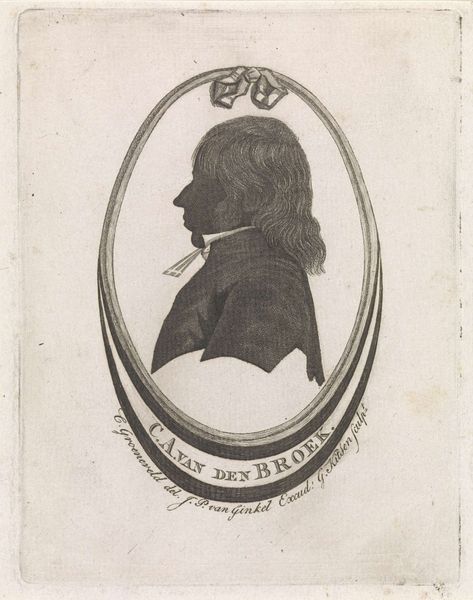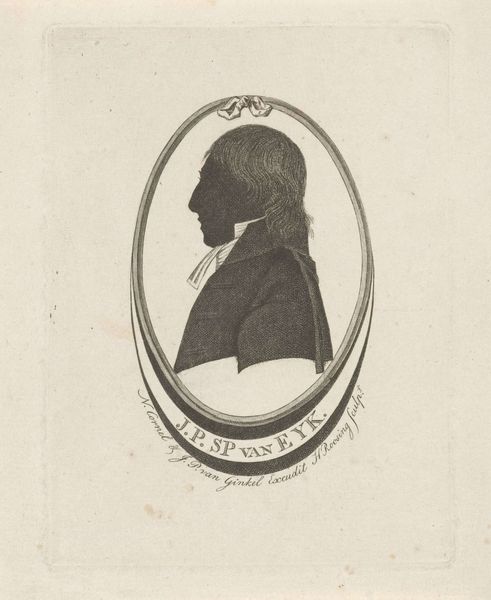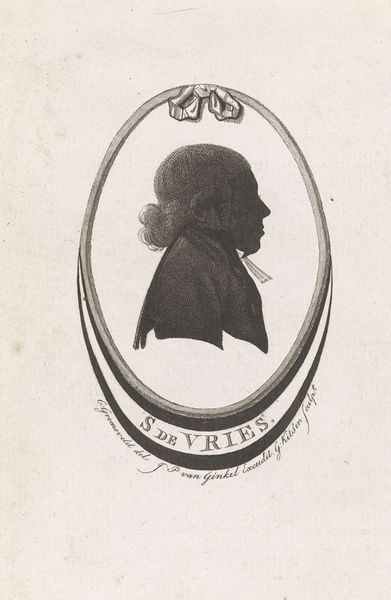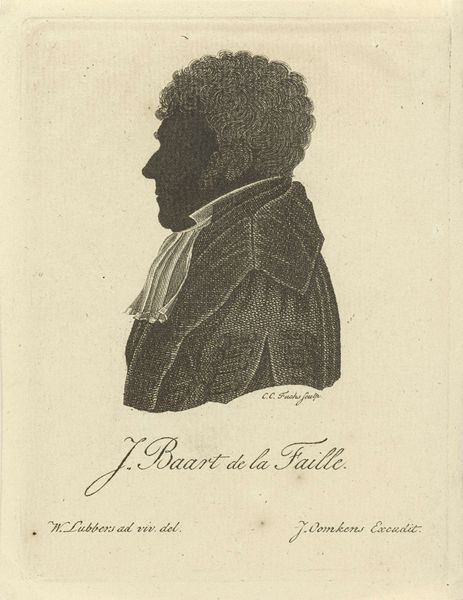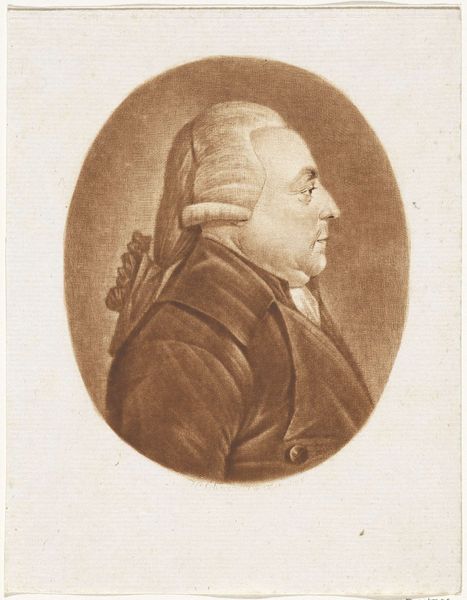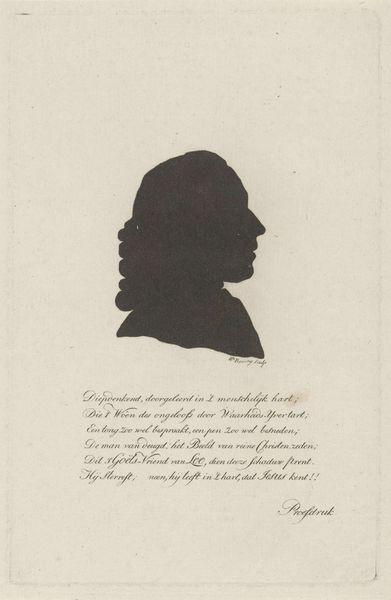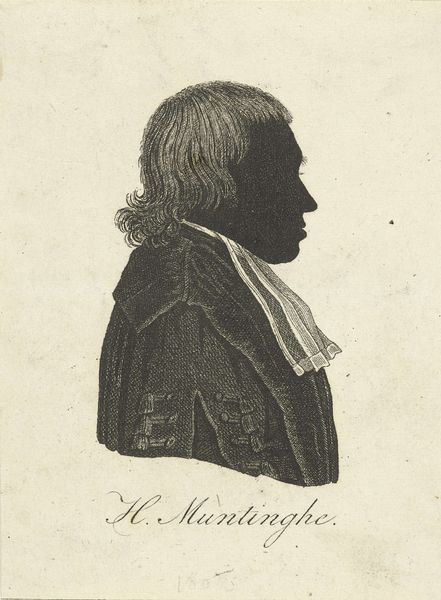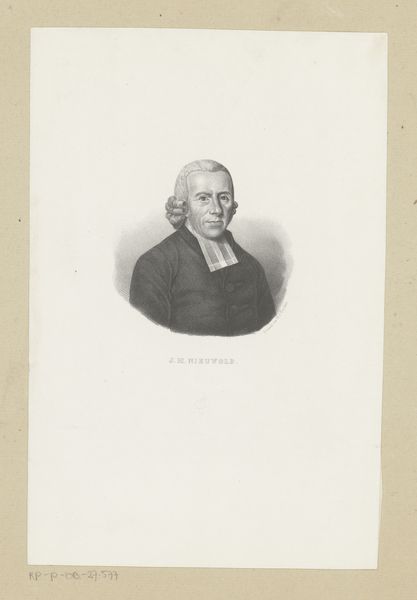
print, engraving
#
portrait
# print
#
book
#
portrait reference
#
pencil drawing
#
geometric
#
portrait drawing
#
engraving
Dimensions: height 503 mm, width 355 mm
Copyright: Rijks Museum: Open Domain
Curator: At first glance, this strikes me as rather severe, a study in stark contrasts. The heavy shadow gives it a dramatic, almost imposing presence. Editor: Agreed. Let’s delve deeper into "Portret van Johannes Henricus Scholten," attributed to Johann Peter Berghaus, and tentatively dated between 1853 and 1854. What intrigues me is the meticulous execution of this print, seemingly an engraving, which sits within the Rijksmuseum collection. Curator: The oval format is quite conventional for portraiture of this era, a conscious choice to evoke classicism and authority. But consider how the stark black silhouette disrupts that expectation. It resists easy readability, doesn't it? Editor: Precisely. Thinking about it from a production angle, creating such a crisp silhouette through engraving demanded immense skill. The artist had to negotiate with metal, line and acid to convey mass with a play of voids, challenging the assumption that images are defined by accumulation of matter. Curator: Good point. That void speaks volumes, or rather, silences. The eye struggles to resolve detail within that darkness, pushing the viewer to consider what's being deliberately concealed. A face both present and absent... Editor: Absolutely, and that void emphasizes Scholten's clothing: the crisp collar and draped garment; consider how that interplay performs power! It's tempting to decode what his clerical garb could communicate about 19th-century Dutch society too. Curator: Perhaps the shadow then symbolizes a specific intellectual posture, or perhaps spiritual doubt within this prominent theologian's life? Berghaus offers no easy answers. It prompts more questions about the man's inner life than it resolves. Editor: I'm more inclined to read into it the material processes that give shape to that life, tracing the economic infrastructure embedded within an artisanal print tradition of that era. To render an academic elite meant access to specific knowledge economies. Curator: So, where does that leave us with Johannes Henricus Scholten? A somber figure rendered with superb formal control, ripe with potential interpretations. Editor: A testament, really, to the lasting significance of an artwork rooted within craft labor to communicate not only presence, but also to invite us to interrogate material and social contexts of that presence.
Comments
No comments
Be the first to comment and join the conversation on the ultimate creative platform.
